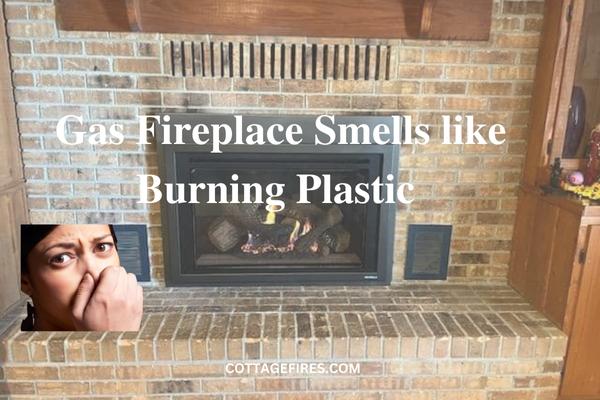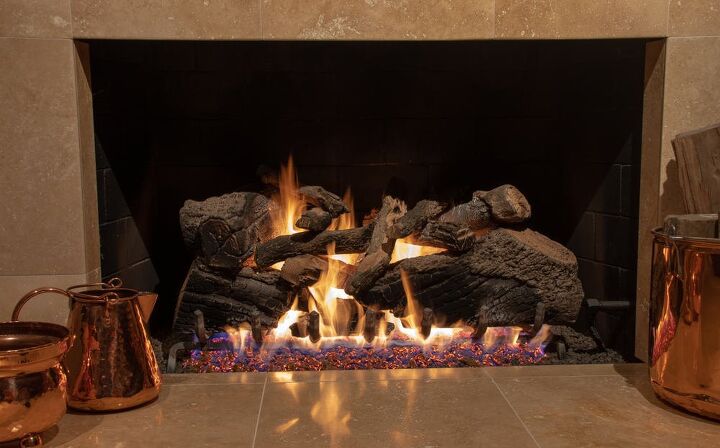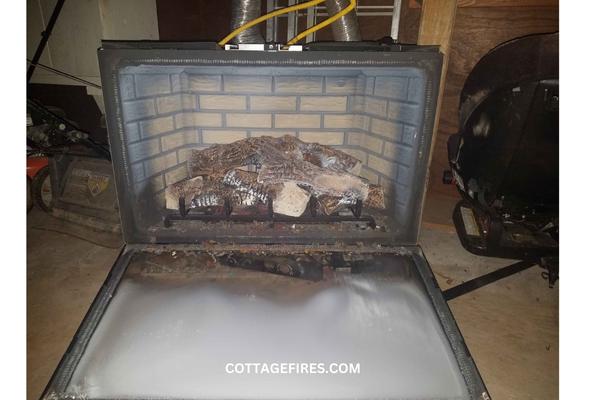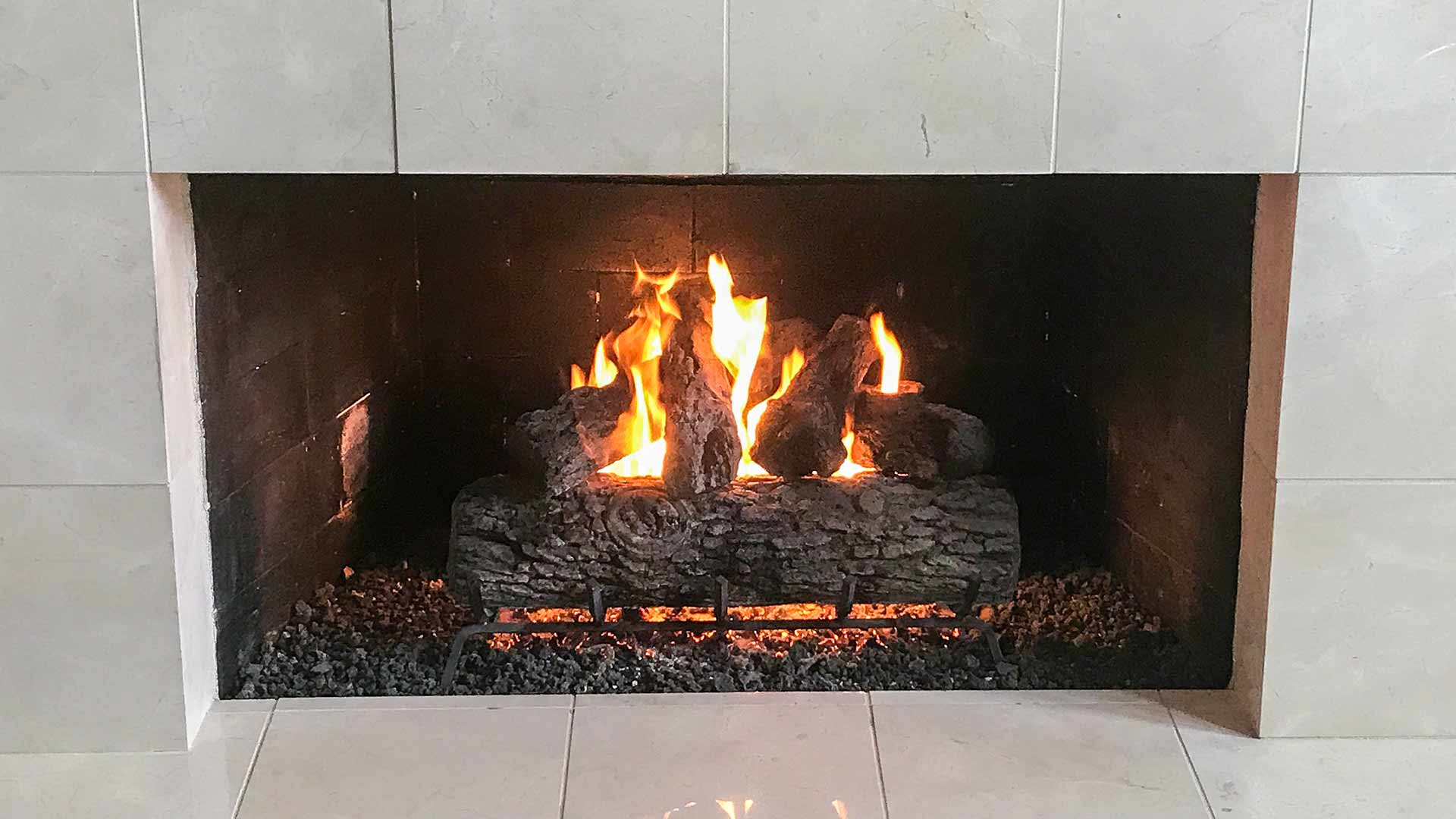Gas Fireplace Smells Like Burning Plastic

A gas fireplace provides cozy warmth and aesthetic appeal, making it a popular heating option in many homes and commercial spaces. However, an unusual smell, particularly one resembling burning plastic, emanating from your gas fireplace is a cause for concern. This article delves into the potential reasons behind this unpleasant odor, offering insights for homeowners, HVAC technicians, and facility managers alike. We'll cover diagnostics, troubleshooting steps, and when it's essential to call in a professional. Understanding the root cause and taking appropriate action ensures both safety and the continued efficient operation of your gas fireplace.
Understanding the Burning Plastic Smell
The scent of burning plastic from a gas fireplace is often more alarming than other common gas fireplace smells like sulfur or natural gas (which smells like rotten eggs due to added mercaptan). Plastic burning signifies that something is overheating and potentially melting. This could stem from various factors, ranging from minor issues to more serious malfunctions within the system.
Common Culprits: New Fireplace "Burn-Off"
A new gas fireplace often emits odors during its initial uses. This is often referred to as the "burn-off" period. Manufacturing oils, protective coatings, and residues from the production process on the metal components, paint, and even within the gas lines are heated up for the first time. This can sometimes be mistaken for a burning plastic smell. The key indicator here is the newness of the unit. This smell should dissipate after a few hours of use. Make sure to ventilate the room well during this initial burn-off phase.
Foreign Objects in the Fireplace
One of the most common reasons for a burning plastic smell is the presence of a foreign object within the fireplace. Children's toys, remote controls, plastic decorations, or even packaging materials can inadvertently fall into the firebox or onto the logs. These items, when exposed to the intense heat of the flames, will melt and emit a strong burning plastic odor. Careful inspection of the firebox, log set, and surrounding area is crucial to identify and remove any such objects. Remember to turn off the gas supply before reaching into the fireplace.
Overheating Electrical Components
Gas fireplaces often contain electrical components, such as the igniter, control module, or blower motor. If any of these components are malfunctioning or overheating, they can produce a burning plastic smell. Wiring insulation can melt, plastic housings can deform, and circuit boards can scorch, all contributing to the unpleasant odor.
Diagnosing Electrical Issues:
- Visual Inspection: Carefully examine the control panel, wiring, and blower motor for any signs of melting, discoloration, or damage.
- Multimeter Testing: Use a multimeter to test the voltage and continuity of electrical components. An inconsistent reading or a complete lack of continuity indicates a faulty component. Always disconnect the power supply before working with electrical components.
- Blower Motor Check: A failing blower motor can overheat if it's struggling to turn. Listen for unusual noises like squealing or grinding.
Dust and Debris Accumulation
Over time, dust, lint, and other debris can accumulate within the gas fireplace, particularly around the burner assembly and pilot light area. When heated, this accumulated material can create a burning smell that may be mistaken for burning plastic. Regular cleaning and maintenance are essential to prevent this issue.
Cleaning Tips:
- Vacuuming: Use a vacuum cleaner with a brush attachment to remove dust and debris from the firebox, burner assembly, and log set.
- Compressed Air: Use compressed air to blow out any remaining dust and debris from hard-to-reach areas.
- Pilot Light Cleaning: Carefully clean the pilot light assembly with a soft brush and a small amount of rubbing alcohol. Ensure the gas supply is turned off before cleaning the pilot light.
Damaged or Improperly Installed Venting
The venting system of a gas fireplace plays a crucial role in safely exhausting combustion byproducts, including heat. If the venting system is damaged, improperly installed, or obstructed, it can cause excessive heat buildup within the fireplace enclosure. This excessive heat can, in turn, melt plastic components or ignite accumulated dust and debris, resulting in a burning plastic smell.
Vent Inspection:
- Visual Examination: Check the venting pipes for any signs of damage, such as dents, cracks, or corrosion.
- Obstruction Check: Ensure that the venting system is free from obstructions, such as bird nests, leaves, or debris.
- Proper Installation: Verify that the venting system is properly installed according to the manufacturer's specifications. This includes correct pipe diameter, slope, and termination point. Incorrect installation is a common problem, especially in older installations or DIY projects.
Troubleshooting Steps: A Practical Guide
When encountering a burning plastic smell from your gas fireplace, a systematic approach to troubleshooting is essential. Follow these steps to identify and resolve the issue:
- Turn Off the Fireplace: Immediately turn off the gas supply to the fireplace to prevent further overheating and potential damage.
- Ventilate the Area: Open windows and doors to ventilate the room and dissipate any accumulated fumes.
- Visual Inspection: Conduct a thorough visual inspection of the firebox, log set, venting system, and electrical components. Look for any signs of melting, damage, or foreign objects.
- Remove Foreign Objects: If you identify any foreign objects within the fireplace, carefully remove them.
- Clean the Fireplace: Thoroughly clean the firebox, burner assembly, and log set to remove any accumulated dust and debris.
- Test Electrical Components: Use a multimeter to test the voltage and continuity of electrical components, such as the igniter and blower motor.
- Inspect the Venting System: Examine the venting system for any signs of damage or obstructions.
- Restart and Monitor: After completing the above steps, restart the fireplace and closely monitor it for any recurring smells or unusual behavior.
When to Call a Professional
While some issues can be resolved through DIY troubleshooting, certain situations warrant the expertise of a qualified HVAC technician or gas fireplace specialist. Consider calling a professional if:
- You are unable to identify the source of the burning plastic smell.
- You suspect a gas leak. (Gas leaks are extremely dangerous and require immediate attention.)
- You encounter damaged or malfunctioning electrical components.
- You suspect problems with the venting system.
- The burning plastic smell persists after completing the troubleshooting steps.
A professional technician has the necessary tools, knowledge, and experience to accurately diagnose and repair complex issues within a gas fireplace system. They can also ensure that the fireplace is operating safely and efficiently.
Preventative Maintenance: Minimizing Future Problems
Regular maintenance is crucial to prevent problems and extend the lifespan of your gas fireplace. Consider the following preventative measures:
- Annual Inspection: Schedule an annual inspection and cleaning by a qualified HVAC technician.
- Regular Cleaning: Clean the firebox, burner assembly, and log set regularly to remove dust and debris.
- Venting System Check: Periodically inspect the venting system for any signs of damage or obstructions.
- Carbon Monoxide Detector: Install and maintain a carbon monoxide detector in the vicinity of the gas fireplace. Carbon monoxide is a colorless, odorless gas that can be deadly.
Cost Considerations
The cost of repairing a burning plastic smell in a gas fireplace can vary depending on the cause of the problem. Simple issues, such as removing a foreign object or cleaning the fireplace, may not incur any significant costs. However, more complex repairs, such as replacing electrical components or repairing the venting system, can be more expensive.
Estimated Costs:
- Service Call: $75 - $150
- Electrical Component Replacement: $100 - $500
- Venting System Repair: $200 - $1000+ (depending on the extent of the damage)
Regular maintenance can help prevent costly repairs and ensure the long-term performance of your gas fireplace. Think of it as an investment in safety and comfort.
Conclusion
A burning plastic smell emanating from a gas fireplace should never be ignored. By understanding the potential causes, following the troubleshooting steps outlined in this article, and seeking professional assistance when necessary, you can ensure the safe and efficient operation of your gas fireplace. Remember, prioritizing safety and regular maintenance will contribute to years of cozy warmth and enjoyment from your gas fireplace. Ignoring warning signs can lead to more significant damage, potential hazards, and costly repairs down the line. Taking proactive measures is the key to a safe and enjoyable experience.










